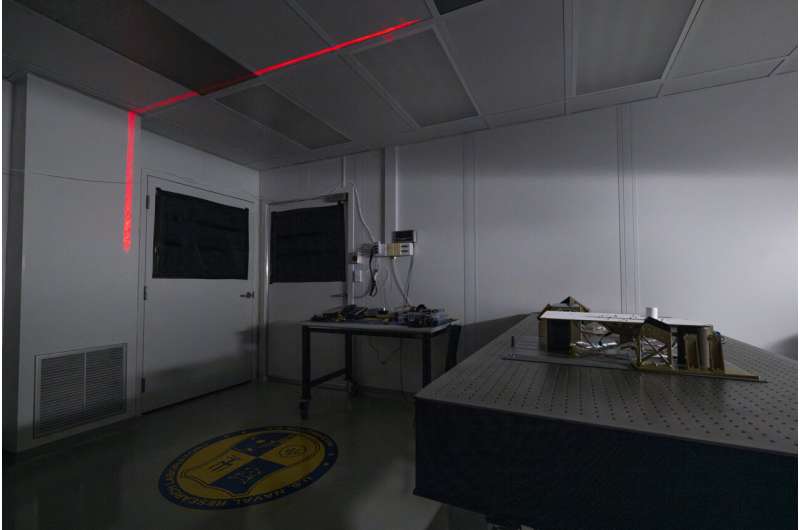U.S. Naval Research Laboratory’s (NRL) Lightsheet Anomaly Resolution and Debris Observation (LARADO) instrument was successfully integrated and tested on the Space Test Program Satellite 7 (STPSat-7) spacecraft at National Aeronautics and Space Administration (NASA) Johnson Space Center, Houston, Texas, on July 17, 2024.
LARADO is a groundbreaking space-based instrument designed to detect and characterize lethal non-trackable orbital debris, using satellite and laser technology.
These debris objects, ranging in size from a few centimeters to larger than a millimeter, are too small to track from the ground but pose a significant threat to operational satellites.
“Understanding the population of this debris is critical to ensuring the safety of spacecraft, both manned and unmanned,” said Andrew Nicholas, NRL Sensor Development & Applications Section Head. “The data collected by LARADO will be used to update NASA’s orbital debris models, improving our understanding of the small debris population.”
Traveling on a satellite in orbit, light from LARADO’s laser centers on a Powell lens, which distributes photons, creating a sheet of light above the satellite. Any object that passes through the lightsheet will scatter the photons, creating a flash marking its passage that will be seen by a camera monitoring the lightsheet.

LARADO arrived at the Space Test Program (STP) Houston at the NASA Johnson Space Center on July 12, 2024. A team of NRL researchers performed a post-ship inspection and a functional test of the instrument. NRL’s Sensor Development and Application Section researchers Andrew Nicholas, Theodore Finne, and Joshua Wolf comprise the LARADO team.

“After passing inspection and installment, LARADO will be tested again to verify functionality,” Nicholas said. “The spacecraft will continue integration and testing in Houston, and then be shipped to the next location for environmental testing.”
LARADO is managed by the Heliophysics Division Space Weather Program’s Orbital Debris and Space Situational Awareness portfolio within NASA’s Science Mission Directorate.
The spacecraft is scheduled for launch on a Department of Defense (DOD) STP sponsored flight out of Vandenberg Space Force Base, in September 2025, on a Minotaur IV launch vehicle.
NRL’s Space Science Division conducts a broad-spectrum of Research, Development, Test & Evaluation in solar-terrestrial physics, astrophysics, upper and middle atmospheric science, and astronomy.
The science is important to orbital tracking, radio communications, and navigation that affect the operation of ships and aircraft, utilization of the near-space and space environment of the Earth.
The section focuses on innovative technologies and processing methods to improve the scientific understanding of space weather and situational awareness within Geospace, to critically enable advanced modeling and forecasting capabilities and applications for the Navy and Marine Corps, and the wider DOD.
Provided by
Naval Research Laboratory
Citation:
Naval Research Laboratory’s LARADO instrument to detect lethal orbital debris, integrated on STP satellite (2024, August 30)
retrieved 30 August 2024
from
This document is subject to copyright. Apart from any fair dealing for the purpose of private study or research, no
part may be reproduced without the written permission. The content is provided for information purposes only.